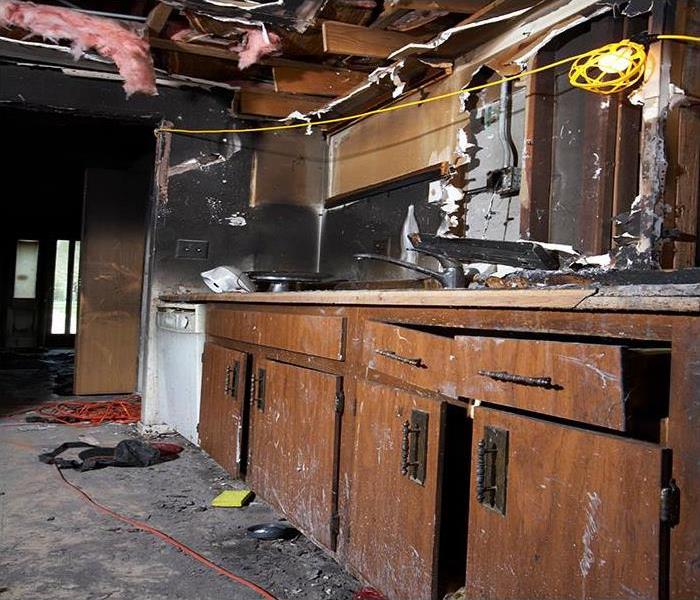Our Experts Discuss Our Restoration Deodorization Procedures In Clifton
10/2/2019 (Permalink)
Clifton's Fire Damage Pros Spell Out Restoration Deodorization Procedures
When anything ignites in or near your Clifton residence, burnt materials are not the only problems that can materialize. Smoke which consists of partially combusted fuels can add to the severity of your property's fire damage. Smoke can travel throughout your structure and leave behind soils and soot residues that can firmly adhere to surfaces in your home. Microscopic partially combusted particles can also penetrate deeply into porous items, making them smell burnt.
Our SERVPRO technicians know that a significant part of any fire damage project in Clifton is deodorization. Foul aromas can exist well after the blaze gets put out unless the problems get treated. When removing malodor particles, there are specific steps that must be taken to best accomplish the task of deodorization.
When working on restoration deodorization, our SERVPRO team follows four main procedures to return your house to preloss conditions.
1. Remove The Odor's Source
If items got burnt during the blaze, we start by removing the charred materials. For example, if your contents got torched, we dispose of them so that malodor particles coming from them do not spread to your building materials. Soot can also be a source of pungent smells. Therefore we can take steps to remove the residues left behind by smoke.
2. Clean Odor-Causing Residues From Surfaces
Soot residues and soils can adhere to surfaces inside your home and become a source for burnt aromas. Cleaning the soot from affected surfaces can help reduce the presence of malodor particles. We can remove soot residues by using specialized chemicals and cleaning techniques.
3. Re-Create The Conditions Of Odor Penetration
Since smoke can penetrate deeply into some items, the best way to deodorize can often be to mimic the behavior of smoke. We can use heavy-duty fogging machines that break down deodorants into small particles that can penetrate porous materials in the same way the smoke did.
4. Seal Surfaces As Needed
Sometimes smoke can penetrate wooden materials, and malodor particles can get stuck inside the wood. When this occurs, using a sealant paint can help seal in the malodor particles.
If you ever smell burnt aromas in your house after something burns, call SERVPRO of Clifton at (973) 928-3705. Our goal is always to return your home 100% and make it seem, “Like it never even happened.”
For more about Clifton click here.






 24/7 Emergency Service
24/7 Emergency Service
